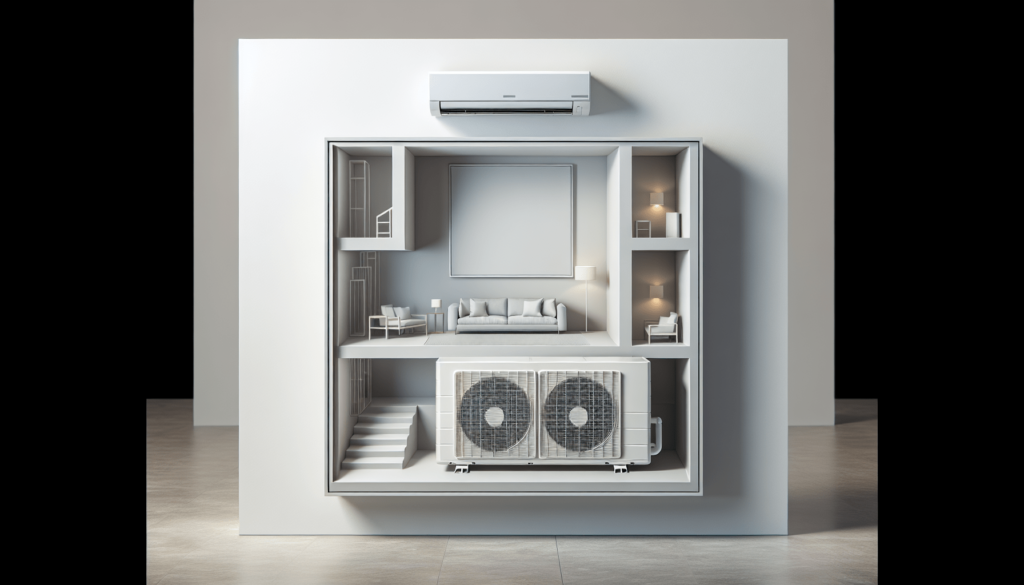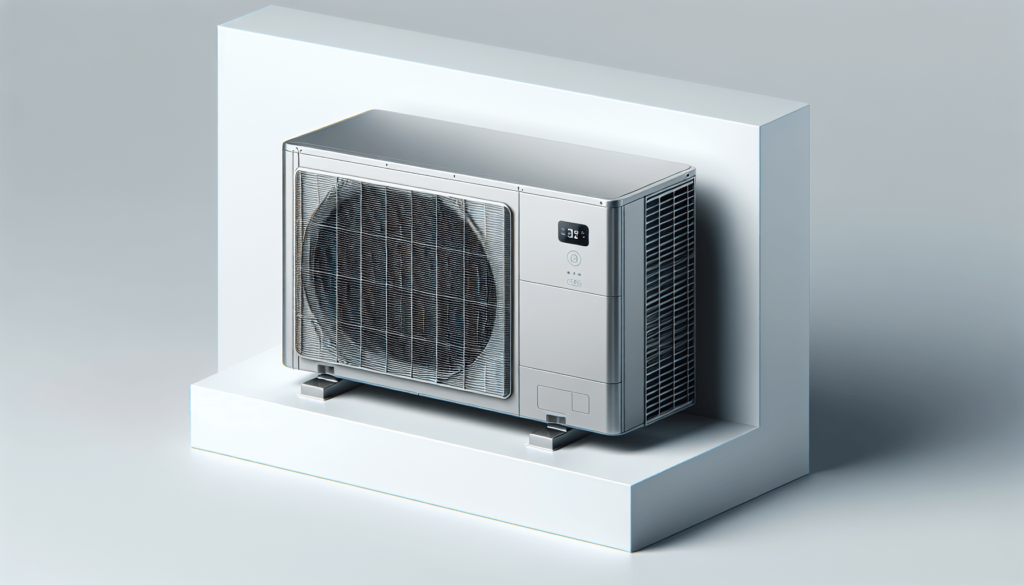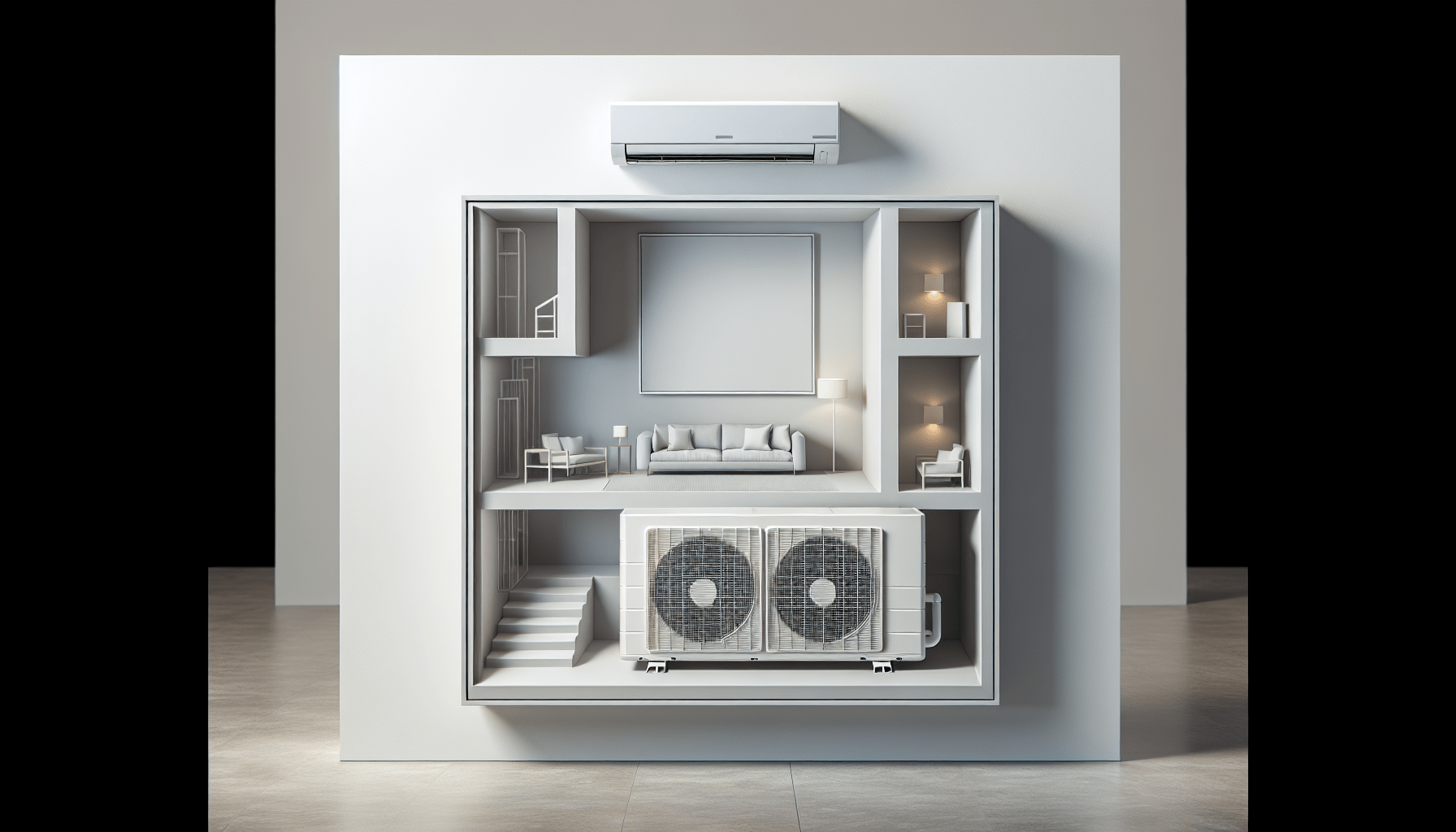If you’re in the market for a mini split system for your multi-family housing, there are a few factors you’ll want to consider before making your selection. From the size and layout of your space to your desired level of energy efficiency, each decision you make will have an impact on both comfort and cost. In this article, we’ll explore the key factors to keep in mind when choosing a mini split system, helping you make an informed decision that suits the needs of your multi-family housing.

Understanding Mini Split Systems
Overview of Mini Split Systems
Mini split systems, also known as ductless mini split systems, are a popular choice for heating and cooling in multi-family housing. They consist of two main components: an outdoor unit and indoor air handlers. The outdoor unit houses the condenser and compressor, while the indoor air handlers distribute the conditioned air. Unlike central HVAC systems, mini split systems do not require ductwork, making them a versatile and efficient option for multi-family housing.
How Mini Split Systems Work
Mini split systems work by using refrigerant to transfer heat between the indoor and outdoor units. During the cooling mode, the refrigerant absorbs heat from indoor air and releases it outside, cooling the indoor space. In the heating mode, the process is reversed, with the refrigerant absorbing heat from the outdoor air and releasing it inside. This efficient heat transfer allows mini split systems to provide both heating and cooling capabilities.
Advantages of Mini Split Systems for Multi-Family Housing
Mini split systems offer several advantages for multi-family housing:
-
Individual Temperature Control: Each indoor air handler can be independently controlled, allowing residents to set their desired temperature in each room or zone. This enhances comfort and eliminates temperature disputes among residents.
-
Energy Efficiency: Mini split systems are highly energy efficient, mainly due to their lack of ductwork. Without duct losses, the conditioned air reaches the intended spaces directly, minimizing energy waste.
-
Easy Installation: Installing mini split systems is relatively straightforward, especially compared to the complexities of installing or modifying ductwork. The lack of ductwork also eliminates the need for space-consuming ventilation shafts, making the installation process more flexible and hassle-free.
-
Space Savings: Mini split systems are compact and take up minimal space. This is especially beneficial in multi-family housing, where space can be limited. The outdoor unit can be installed on balconies, rooftops, or other suitable locations, while the indoor air handlers are mounted on walls or ceilings, saving valuable floor space.
-
Quiet Operation: Mini split systems operate silently, ensuring a peaceful living environment for residents. The indoor units produce minimal noise, with most models equipped with noise reduction technology.
-
Customizable Zoning: With multi-zone systems, residents can control the temperature in different areas of their living space. This allows for personalized comfort settings and energy savings by avoiding unnecessary heating or cooling in unoccupied rooms.
Assessing the Housing Layout
Size of the Building
When selecting a mini split system for multi-family housing, it’s essential to consider the size of the building. The square footage will determine the capacity required to adequately heat and cool the space. Oversized systems may result in short cycling, leading to inefficient operation and increased wear and tear on the equipment. Undersized systems, on the other hand, may struggle to provide sufficient heating or cooling during extreme weather conditions.
Number of Rooms
The number of rooms in the multi-family housing unit should also be taken into account. Each room or area will require its own indoor air handler, so it’s important to determine the total number of units needed. For larger buildings, multi-zone systems with multiple air handlers may be the best option to ensure precise temperature control in each room.
Location of Rooms
Consider the location of the rooms within the multi-family housing unit. Rooms with large windows or direct sunlight exposure may require additional cooling capacity, while rooms in shaded areas may need less. It’s important to assess the orientation and layout of the rooms to ensure that the mini split system is sized appropriately for optimal comfort.
Existing HVAC Systems
If the multi-family housing unit already has existing HVAC systems, such as traditional central heating and cooling, it’s crucial to assess their compatibility with mini split systems. Integration with existing systems may be possible, but it’s important to consult with HVAC professionals to ensure compatibility and avoid any potential issues.
Energy Efficiency Considerations
Energy Star Ratings
When selecting a mini split system for multi-family housing, it is highly recommended to choose models with Energy Star ratings. Energy Star-certified mini split systems meet strict energy efficiency guidelines set by the Environmental Protection Agency (EPA). These systems are designed to reduce greenhouse gas emissions and save energy, resulting in lower utility bills for residents.
SEER Ratings
SEER (Seasonal Energy Efficiency Ratio) ratings indicate the cooling efficiency of mini split systems. Higher SEER ratings signify greater energy efficiency. When comparing different models, look for systems with higher SEER ratings to ensure more efficient cooling operation.
HSPF Ratings
HSPF (Heating Seasonal Performance Factor) ratings indicate the heating efficiency of mini split systems. Just like SEER ratings, higher HSPF ratings indicate greater heating efficiency. Look for models with higher HSPF ratings to ensure optimal heating performance during colder months.
Zoning Requirements
Single-Zone vs Multi-Zone Split Systems
For multi-family housing, the choice between single-zone and multi-zone mini split systems depends on the desired temperature control capabilities. Single-zone systems consist of one outdoor unit and one indoor air handler, offering temperature control for a single room or area. Multi-zone systems, on the other hand, allow for temperature control in multiple rooms or areas by using multiple indoor air handlers connected to a single outdoor unit.
Determining the Number of Zones Needed
To determine the number of zones needed for a multi-zone mini split system, consider the layout and occupancy patterns of the multi-family housing unit. If each room or area will have different temperature control preferences, a multi-zone system may be the best choice. Assess the number of residents, their comfort preferences, and the layout of the unit to determine how many zones will be required.
Temperature Control Preferences
Consider the temperature control preferences of the residents when choosing between single-zone and multi-zone mini split systems. If residents prefer uniform temperature throughout the unit, a single-zone system may be sufficient. However, if there are differing preferences among residents or if certain rooms require different temperatures, a multi-zone system will provide the necessary flexibility for personalized comfort.

Installation Factors
Ease of Installation
Consider the ease of installation when selecting a mini split system for multi-family housing. Look for systems that are designed for easy installation and have intuitive installation manuals. Keep in mind that professional installation may still be required, especially for more complex installations or for ensuring compliance with local building codes.
Required Equipment and Materials
Before installation, determine the equipment and materials needed for the mini split system. This includes the outdoor unit, indoor air handlers, refrigerant lines, electrical wiring, and any additional accessories such as line-set covers or condensate pumps. Ensure that all necessary components and materials are readily available to minimize installation delays.
Professional vs DIY Installation
Decide whether professional installation or DIY installation is the best option for the multi-family housing unit. While some homeowners may have the necessary skills and experience to install mini split systems, professional installation is generally recommended for optimal performance and to ensure compliance with local building codes. Hiring a licensed HVAC professional will ensure proper installation and may also include warranty coverage for the system.
Cost Considerations
Initial Purchase Cost
Consider the initial purchase cost when selecting a mini split system. Prices can vary depending on the brand, model, capacity, and additional features of the system. It’s important to balance the upfront cost with the long-term benefits and energy savings provided by the system. Choosing a reliable and energy-efficient system may result in higher upfront costs but can lead to significant savings in the long run.
Installation Cost
Ensure that the installation cost is included in the overall budget for the mini split system. Professional installation typically requires additional costs, including labor fees, any necessary electrical work, and potential modifications to the building structure. Obtain quotes from multiple HVAC professionals to compare costs and choose the installation option that best fits the budget.
Operational Cost
Consider the operational cost of the mini split system, including energy consumption and potential maintenance requirements. Systems with higher energy efficiency ratings may result in lower operational costs over time. It’s also important to factor in the local utility rates to determine the long-term energy savings potential.
Maintenance Cost
When selecting a mini split system, consider the potential maintenance costs involved. Regular maintenance, such as cleaning filters, inspecting refrigerant levels, and ensuring proper airflow, is essential for optimal system performance and longevity. While some maintenance tasks can be DIY, it’s recommended to budget for professional maintenance at least once a year to ensure proper system operation.
Climate and Weather Conditions
Heating or Cooling Dominated Climates
Consider the climate and weather conditions of the location when selecting a mini split system. In heating-dominated climates, where winters are long and cold, prioritizing heating capacity may be more important. In cooling-dominated climates, where summers are hot and humid, prioritizing cooling capacity may be the primary concern. Assess the climate of the area to select a mini split system that can adequately handle the dominant weather conditions.
Temperature Extremes
If the multi-family housing unit experiences extreme temperature fluctuations, it’s important to choose a mini split system that can handle such conditions. The system should have the capacity to provide sufficient heating during the coldest winters and cooling during the hottest summers. Consider the expected temperature extremes in the area and select a system that can meet those demands.
Humidity Levels
In regions with high humidity levels, it may be beneficial to select a mini split system with dehumidification capabilities. This feature helps remove excess moisture from the air, improving indoor air quality and overall comfort. Dehumidification can be especially important in multi-family housing, where multiple residents contribute to higher moisture levels.
Brand and Model Selection
Popular Mini Split Brands
When selecting a mini split system, consider the reputation and reliability of different brands. Some popular and reputable brands in the mini split system market include Mitsubishi Electric, Daikin, LG, Fujitsu, and Gree. These brands have a proven track record of manufacturing quality HVAC products and are known for their efficient and durable mini split systems.
Reviewing Model Specifications
Review the specifications of different mini split system models to determine which one best meets the needs of the multi-family housing unit. Consider factors such as capacity, energy efficiency ratings, available features, and compatibility with zoning requirements. Look for models that have the required heating and cooling capacities, high energy efficiency ratings, and any additional features that may enhance comfort and convenience for the residents.
Customer Reviews and Ratings
Consult customer reviews and ratings to gather insights from other users who have already installed the mini split systems. These reviews can provide valuable information about system performance, reliability, and customer satisfaction. Pay attention to both positive and negative reviews to get a well-rounded understanding of the brand and model being considered.
Maintenance and Servicing Aspects
Regular Maintenance Requirements
Regular maintenance is crucial for the optimal performance and longevity of mini split systems. Some common maintenance tasks include cleaning or replacing air filters, inspecting refrigerant levels, clearing condensate drain lines, and checking electrical connections. Refer to the manufacturer’s guidelines for specific maintenance requirements and develop a regular maintenance schedule to ensure the system operates efficiently.
Servicing Frequency
Determine the recommended servicing frequency for the mini split system. While some maintenance tasks can be performed by homeowners, it’s recommended to schedule professional servicing at least once a year. Professional servicing ensures that the system is thoroughly inspected, cleaned, and any potential issues are addressed promptly, preventing costly repairs or system failures.
Availability of Local Servicing
Before selecting a mini split system, consider the availability of local servicing for the chosen brand and model. It’s important to have access to qualified HVAC professionals who can provide routine maintenance, repairs, and any necessary warranty services. Research local HVAC companies to ensure that skilled technicians are available for the brand and model being considered.
Legal and Safety Considerations
Building Codes and Regulations
Ensure that the installation and operation of the mini split system comply with local building codes and regulations. Different jurisdictions may have specific requirements regarding equipment placement, electrical work, refrigerant handling, and safety standards. Consult with local authorities or HVAC professionals to understand and adhere to the applicable building codes and regulations.
Safety Standards for Installation and Use
Mini split systems should be installed and used in accordance with safety standards. Electrical connections should be made by licensed electricians, and refrigerant handling should follow industry best practices. Safety precautions should be observed during installation to prevent any potential hazards. It’s important to prioritize safety to ensure the well-being of the residents and to avoid any legal implications.
Warranty and Insurance Coverage
Consider the warranty and insurance coverage offered by the mini split system manufacturer. A comprehensive warranty provides peace of mind and protects against potential defects or malfunctions. Additionally, verify if the mini split system installation is covered by the residential or building insurance policy. Understanding warranty and insurance coverage is important for maintenance and potential repair or replacement needs in the future.
In conclusion, selecting a mini split system for multi-family housing requires careful consideration of various factors, including the housing layout, energy efficiency, zoning requirements, installation factors, cost considerations, climate conditions, brand and model selection, maintenance and servicing aspects, and legal and safety considerations. By thoroughly evaluating these factors, multi-family housing owners can choose the most suitable mini split system that provides optimal comfort, energy efficiency, and longevity for their residents.

